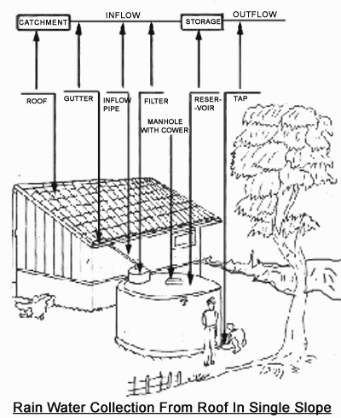



Science of Water Harvesting
Water harvesting refers to the collection and
storage of rainwater, either for direct use, or
for recharge to groundwater.
Objective of Water Harvesting
The objective of water harvesting in differs
between urban and rural areas. In urban areas,
emphasis is put on increasing groundwater
recharge and managing storm water. On the
other hand, in rural areas securing water is
more crucial. There the aim is to provide water
for drinking and
farming, especially for life-saving irrigation, and
to increase groundwater recharge.
Advantages of Rainwater Harvesting
[source: Harvesting Rainwater: Catch Water
Where it Falls! Arjun Bhattacharya & O’Neil Rane]
Water harvesting refers to the collection and
storage of rainwater, either for direct use, or
for recharge to groundwater.
Objective of Water Harvesting
The objective of water harvesting in differs
between urban and rural areas. In urban areas,
emphasis is put on increasing groundwater
recharge and managing storm water. On the
other hand, in rural areas securing water is
more crucial. There the aim is to provide water
for drinking and
farming, especially for life-saving irrigation, and
to increase groundwater recharge.
Advantages of Rainwater Harvesting
- Helps meet the ever increasing demand for
water, by recharging the groundwater. - Reduces the runoff which chokes storm
drains and to avoid flooding of roads. - Reduces groundwater pollution and
improves the quality of groundwater by
providing high quality water, soft and low in
minerals. - In saline or coastal areas, rainwater
provides good quality water and when
recharged to ground water, it reduces
salinity and helps in maintaining balance
between the fresh-saline water interface.
[source: Harvesting Rainwater: Catch Water
Where it Falls! Arjun Bhattacharya & O’Neil Rane]
For more information on rainwater harvesting see:
Centre for Science and Environment
Centre for Science and Environment
The UNForgotten Fund
Harvesting
